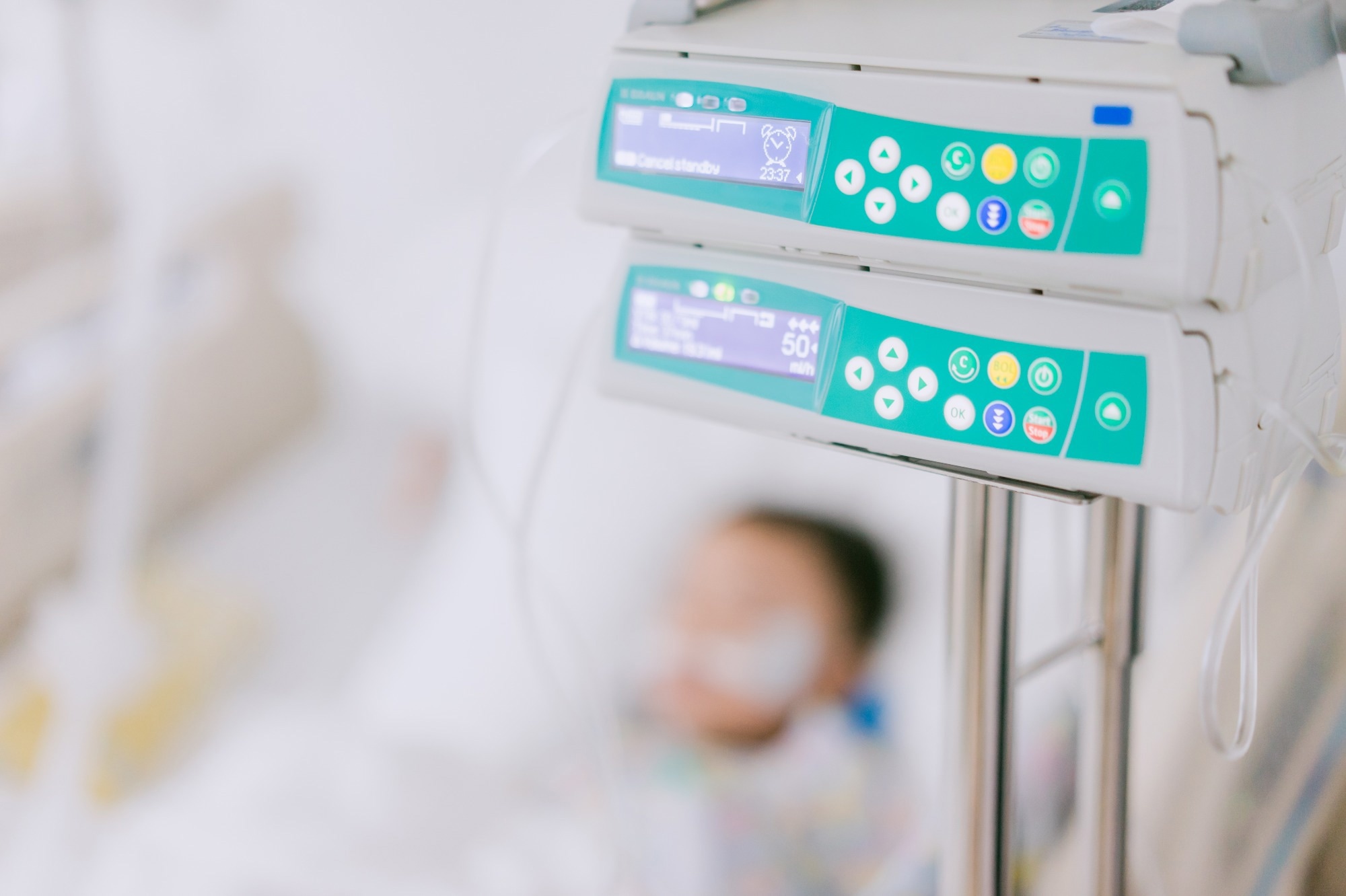In a recent study published in the JAMA Network Open journal, researchers compared the characteristics of multisystem inflammatory syndrome in children (MIS-C) and coronavirus disease 2019 (COVID-19).
In the midst of COVID-19 waves, the focus is also on understanding the post-COVID-19 state or long-COVID. The most significant post-COVID consequence among young individuals has been MIS-C. Since May 2020, the Centers for Disease Control and Prevention (CDC) have begun recording MIS-C case reports. The majority of CDC research on MIS-C consequences has been restricted to a maximum of 66 hospitals in 31 states, while studies on infection cases have reported approximately 1,700 MIS-C patients. The lack of data on MIS-C makes it difficult to study the disease more closely.
 Study: Complications, Adverse Drug Events, High Costs, and Disparities in Multisystem Inflammatory Syndrome in Children vs COVID-19. Image Credit: MIA Studio / Shutterstock
Study: Complications, Adverse Drug Events, High Costs, and Disparities in Multisystem Inflammatory Syndrome in Children vs COVID-19. Image Credit: MIA Studio / Shutterstock
About the study
In the present study, researchers compared the results between COVID-19 and MIS-C using billing data and the new International Statistical Classification of Diseases, tenth revision, Clinical Modification (ICD-10-CM) code for MIS-C.
The team utilized the Healthcare Cost and Utilization Project (HCUP) 2021 inpatient information for 31 states Analyses were performed from 1 February to 20 October 2022. Two subsamples based on age less than 21 were developed: COVID-19 discharges with and without MIS-C.
Using the ICD-10-CM coding guidelines provided by the CDC, the team identified individuals with MIS-C as either suffering from COVID-19 or COVID-19-related sequelae, a prior exposure of COVID-19, or either confirmed or suspected exposure to SARS-CoV-2. This study followed the reporting guidelines observed in the Reporting of Observational Studies in Epidemiology (STROBE).
The team analyzed two clinical outcomes: inpatient mortality and adverse medical events (AMEs) during therapy, especially with immunoglobulin and glucocorticoids, the two most used therapies for MIS-C. The adverse effects of glucocorticoids include myopathy, hyperglycemia, and mood disturbances. Immunoglobulin's adverse effects include nausea, headache, and vomiting. Diuretics, antibiotics, anticoagulants, and antihypertensives were also evaluated as AMEs. Two utilization outcomes were evaluated: stay duration and expenses.
Results
The study results found 4,107 billed MIS-C hospitalizations across 31 states. There were 23,686 patients diagnosed with COVID-19 without MIS-C. Black children were more likely to be hospitalized with MIS-C than those with COVID-19. The proportion of hospitalizations for Hispanic children did not change substantially between COVID-19 and MIS-C. When the study cohort was limited to 2,715 children with MIS-C in the first quarter (Q1), the monthly hospitalization rate for MIS-C was 1.48 per 100,000 children. The frequency for non-Hispanic White children was 0.97, while for Black children, it was 1.99.
The mean inpatient mortality rate for COVID-19 and MIS-C did not differ considerably. However, MIS-C patients had higher AMEs (9.8%) than those with COVID-19 (2.1%). Most of these AMEs were caused by glucocorticoids, including 7.2% and 1.3% MIS-C patients suffering from adverse glucocorticoid events, respectively. Other noteworthy AMEs involving immunoglobulin were 1.5% of MIS-C patients and none COVID-19 patients. An additional 1.5% of MIS-C patients experienced additional AMEs, compared to 0.8% of COVID-19.
MIS-C patients were afflicted by a more significant number of organ systems than COVID-19 patients. Hematologic and respiratory complications were the most common for MIS-C and COVID-19. Approximately 8% of MIS-C patients had complications affecting six or more of the eight organ systems, compared to 1% of COVID-19 patients. Results deteriorated as the number of dysfunctional organ systems climbed from zero to two to six to eight organs. Inpatient mortality rates for MIS-C rose from below 1% to 5.8% and for COVID-19 from below 1% to 17.2%. The incidence of adverse drug reactions elevated from 4.9% to 17.8% for MIS-C and from 1.2% to 13.3% for COVID-19. The median length of hospital stay increased from four to eight days for MIS-C and from three to sixteen days for COVID-19.
Conclusion
The study findings highlighted multiple MIS-C patterns in 2021. First, the prevalence of MIS-C hospitalizations was higher than previously reported, with approximately 17 MIS-C cases per 100 COVID-19 infections. Secondly, MIS-C was considerably more severe than was generally believed. The number of dysfunctions in organ systems is significant, while outcome rates considerably deviate from the norm as multiple organ systems fail. Thirdly, MIS-C was associated with ethnic and racial discrepancies in results, but COVID-19 was not. Lastly, black children in more disadvantaged socioeconomic locations had more severe MIS-C results but not COVID-19 disease outcomes.
Journal reference:
- Encinosa W, Moon K, Figueroa J, Elias Y. Complications, Adverse Drug Events, High Costs, and Disparities in Multisystem Inflammatory Syndrome in Children vs COVID-19, JAMA Netw Open, 2023;6(1):e2244975, DOI: https://www.doi.org/10.1001/jamanetworkopen.2022.44975, https://jamanetwork.com/journals/jamanetworkopen/fullarticle/2800087